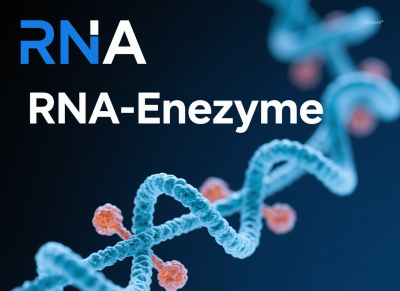RNA Velocity: Computational Inference of Cellular State Dynamics from Single-Cell Transcriptomics
RNA velocity is a computational method that leverages single-cell transcriptomic data to infer the direction and speed of cellular state transitions by analyzing the dynamics of unspliced and spliced mRNA. The core principles are outlined below:
Biological Basis
mRNA biogenesis involves two key stages: transcription (yielding unspliced pre-mRNA) and splicing (producing mature mRNA). Since unspliced mRNA precedes spliced mRNA, the temporal disparity between them encodes kinetic information about cellular state transitions. By quantifying deviations from steady-state assumptions in the ratio of these mRNA types, the rate of gene expression changes can be estimated.
Mathematical Models
Differential equations are employed to model transcriptional kinetics:
- Deterministic models (e.g., velocyto): Assume cells are in steady state, estimating splicing rate (β) and degradation rate (γ) via linear regression. Velocity is derived from residuals between observed values and steady-state ratios.
- Stochastic models: Incorporate probabilistic events to describe transcription, improving robustness through first- and second-order moment analysis.
- Dynamical models (e.g., scVelo): Use expectation-maximization (EM) algorithms to iteratively optimize parameters (e.g., transcription rate α, splicing rate β, degradation rate γ) and infer latent time, reflecting differentiation progression.
Applications
- Cell fate prediction: Velocity vector fields reveal differentiation trajectories (e.g., from progenitors to terminal states).
- Key gene identification: Regulatory drivers (e.g., transcription factors) of state transitions are pinpointed.
- Temporal scaling: Vector magnitude indicates differentiation speed, while coherence evaluates prediction confidence.
Tools & Limitations
- Tools: velocyto (steady-state assumption) and scVelo (dynamic modeling, adaptable to heterogeneous populations).
- Limitations: Sensitivity to data quality (e.g., full-length transcript coverage) and potential biases from model assumptions (e.g., steady-state in transient processes).
Example: In pancreatic development data, positive velocity for Cpe marks upregulation driving β-cell differentiation, while negative velocity for Adk indicates ductal cell transition. Projecting velocity vectors onto UMAP embeddings visualizes differentiation paths.





RNA Velocity(RNA速率)
RNA Velocity 是一种基于单细胞RNA测序(scRNA-seq)数据的计算方法,用于预测细胞状态的动态变化,揭示细胞分化、转分化或激活等生物学过程的方向和速度。
核心概念
原理
通过比较未剪接(unspliced,前体mRNA)和已剪接(spliced,成熟mRNA)的RNA比例,推断基因表达的瞬时变化趋势。
正向速度(未剪接↑ → 基因表达将增强);负向速度(未剪接↓ → 基因表达将减弱)。
关键假设
基因表达变化受转录、剪接和降解速率共同调控,且这些过程存在时间延迟。
应用场景
细胞命运预测
揭示干细胞分化轨迹(如从造血干细胞到不同血细胞谱系)。
疾病机制研究
追踪肿瘤细胞亚群的演化或免疫细胞激活路径。
发育生物学
解析胚胎发育中细胞类型转换的动态过程。
技术挑战
数据噪声:需高质量scRNA-seq数据,避免技术偏差影响速度估计。
算法限制:现有工具(如Velocyto、scVelo)对复杂轨迹的解析仍需优化。